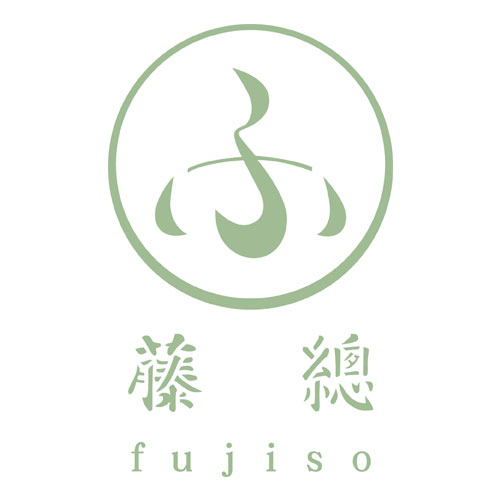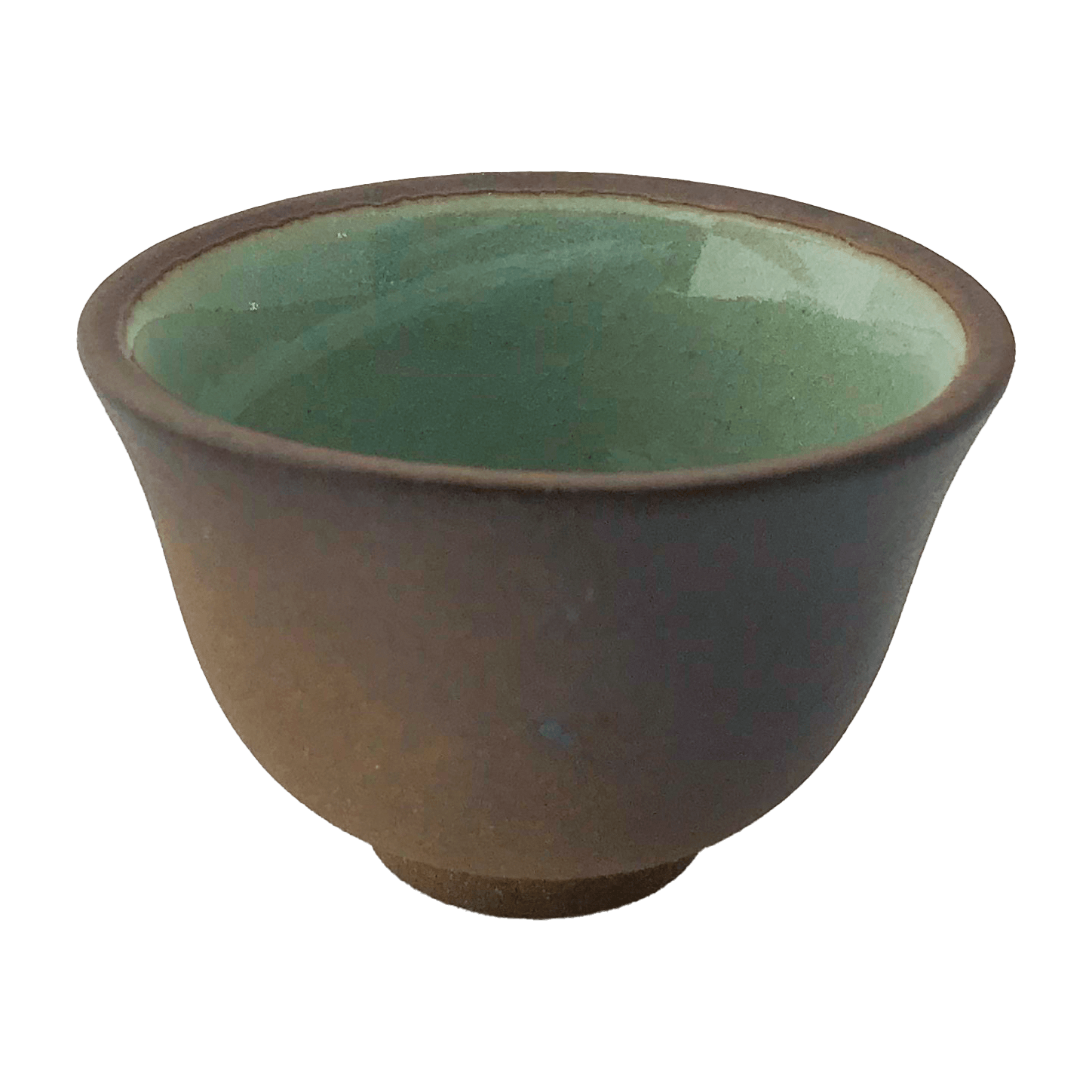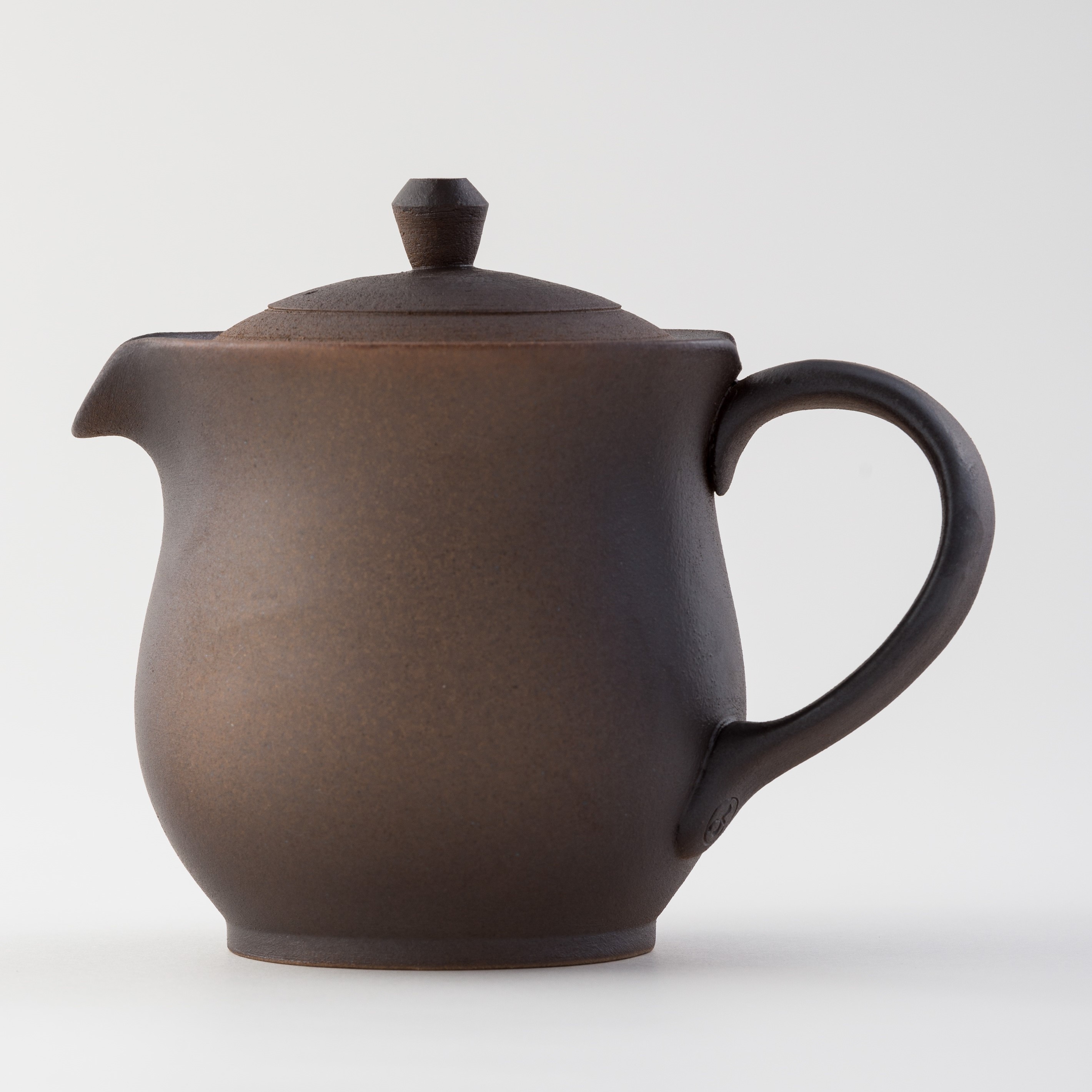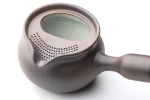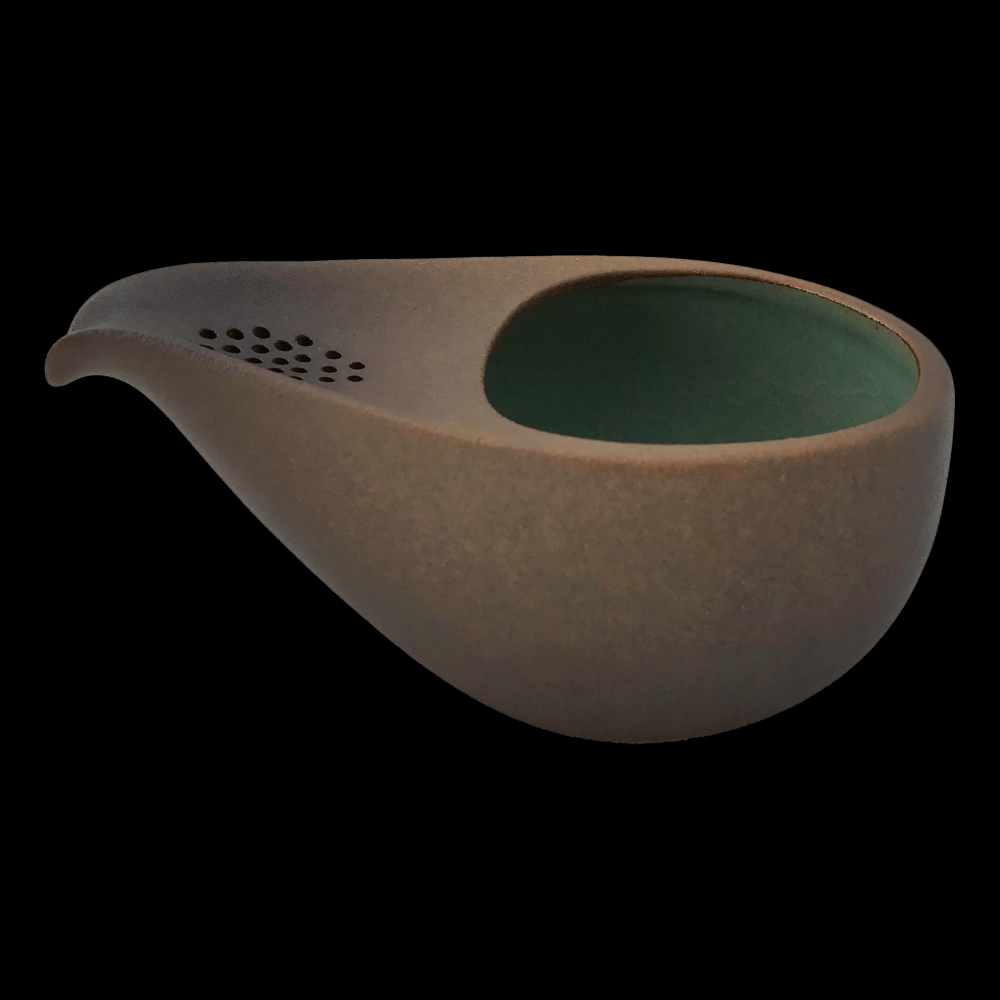
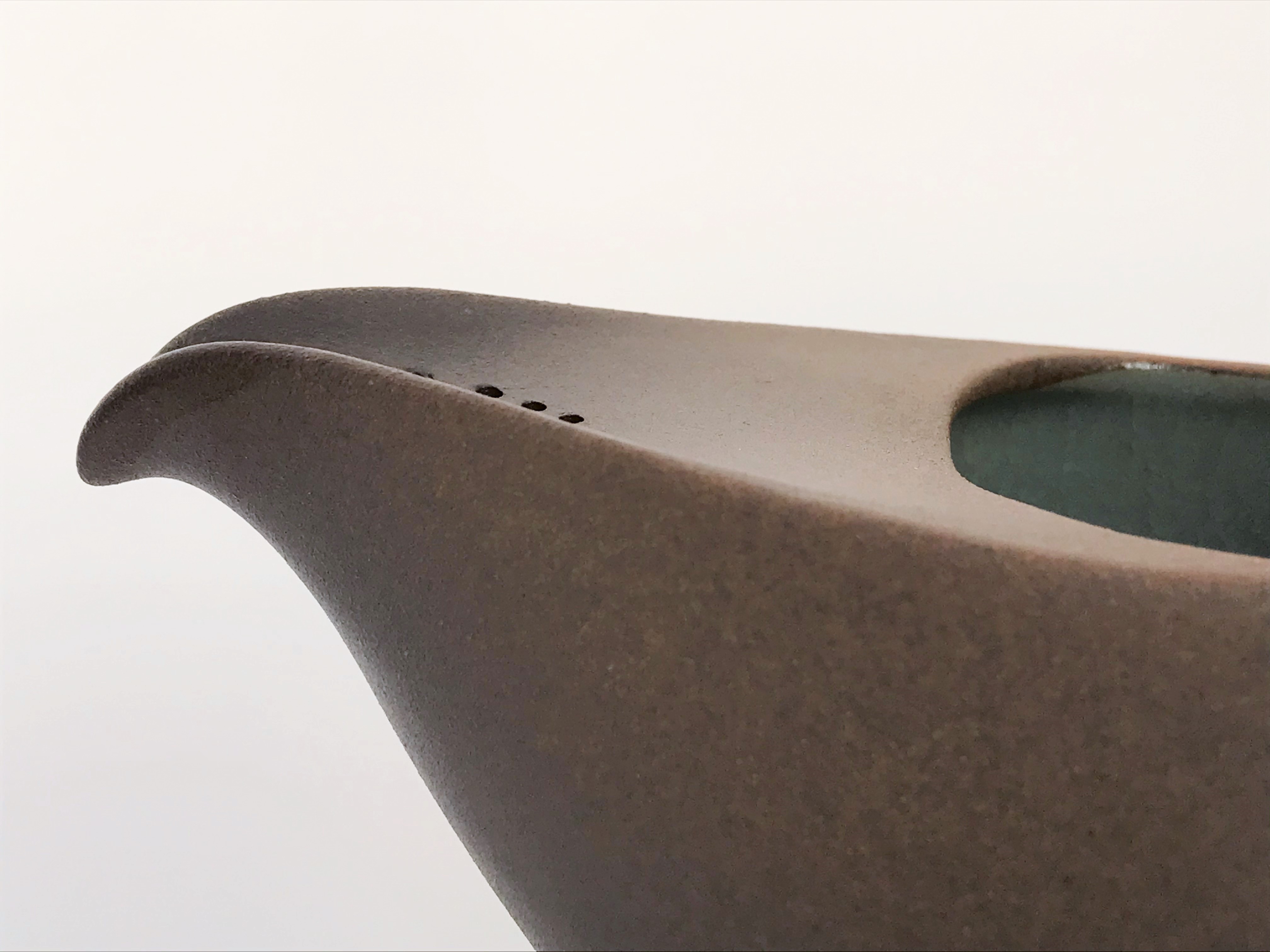
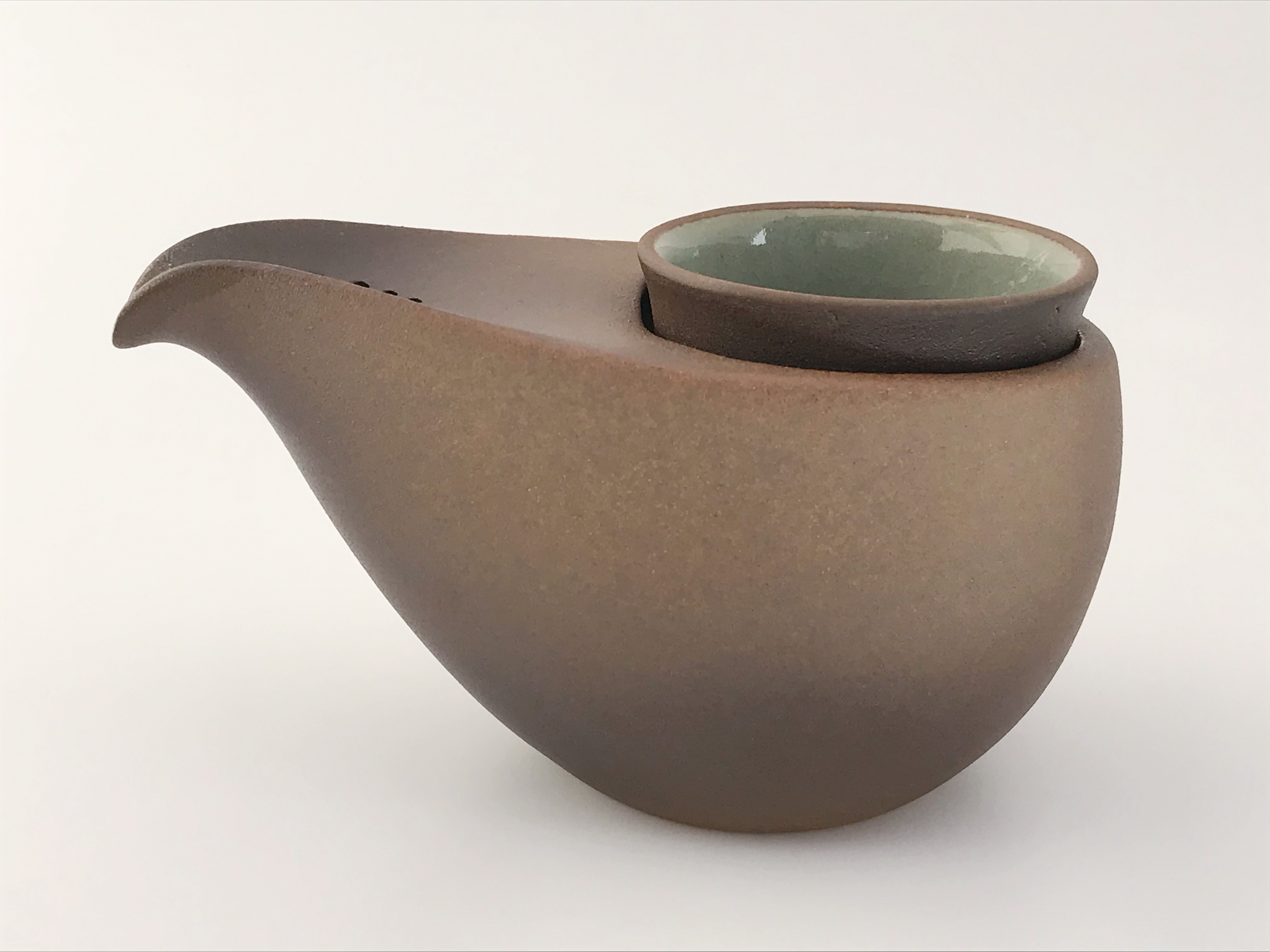
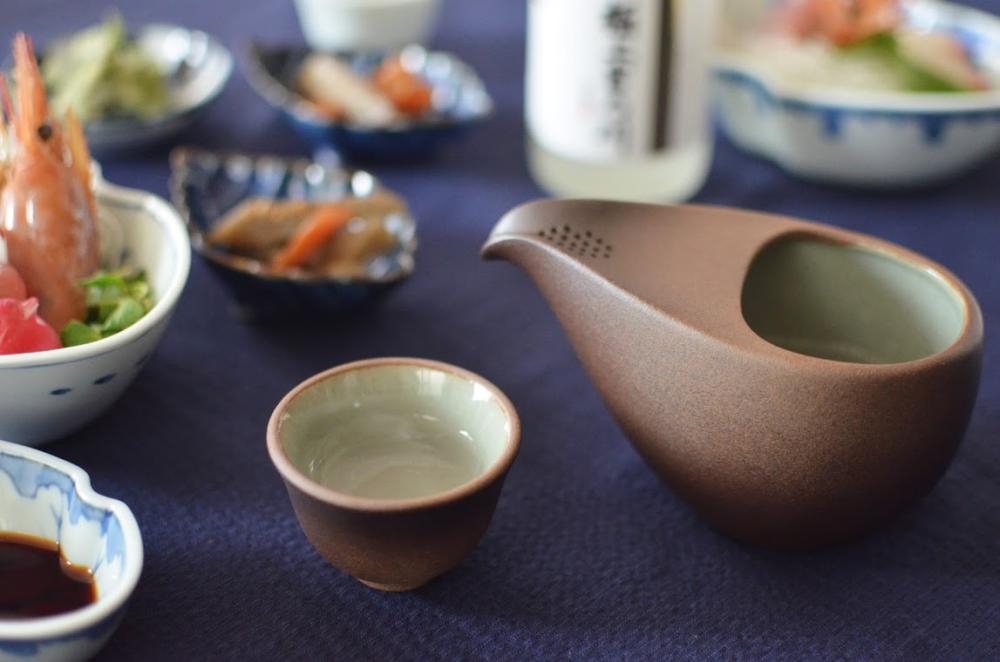

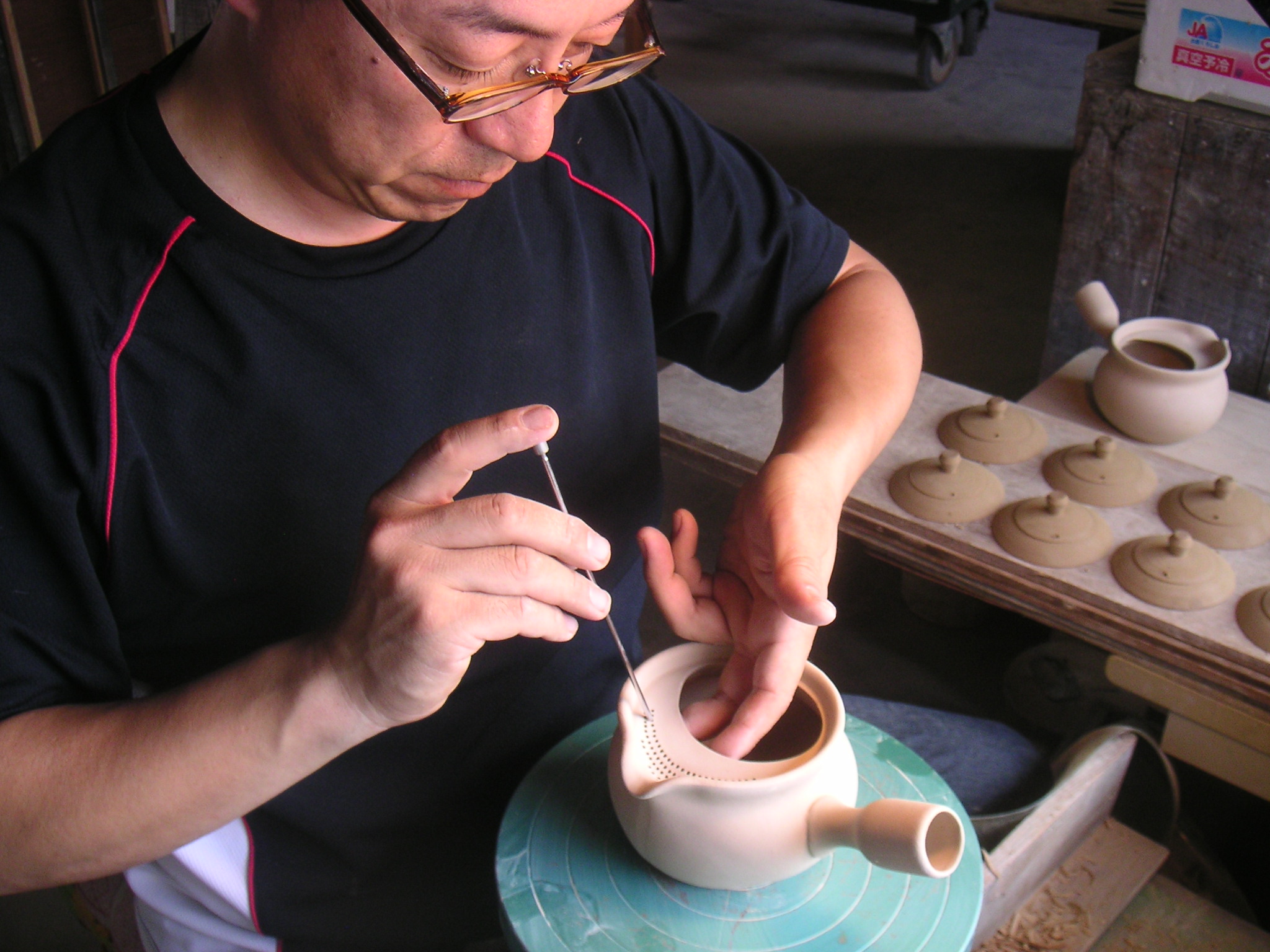


















Hitoshizuku translates as "one drop" and refers to the drop-like shape of the pot. Simple and elegant, Japanese aesthetics in the tradition of Bako-Yaki ceramics and modern design find a harmonious balance here.
In the open pot, the tea can unfold freely and is retained by the strainer in front of the beak-shaped spout when brewed in the pot. The leaves remain in the pot and are then simply brewed again briefly with water for further infusions.
In the open teapot, this process can be followed particularly beautifully - it is also ideally suited for cold infusions.
Special features.
In the Fujiso Manufactory, the holes in the clay strainer are pierced by hand before pouring. This skill is still mastered by only a few masters in Japan - there are only 3 artists left who make such sieves in Japan.
Clay sieves of this type are particularly well suited for slightly larger leaf material. These include medium-strong or only lightly steamed teas such as Gyokuro, Shincha Yakushima, Hojicha, Oolong and other specialties. In the case of intensely steamed tea (fukamushi cha), the fine leaf material may get stuck in the holes.
On the outside, the reddish-brown clay typical of the Banko-Yaki style is unglazed, while a light, pale green glaze has been applied to the inside. This glaze has been specially developed to facilitate cleaning and to allow the aroma of the prepared teas to develop without external influences and to prevent it from settling in the porous clay. Thus, the pot can be used for alternating teas with intense aroma without it lingering on the next tea.
The lack of a handle makes the pot easy to store in the kitchen cupboard or luggage to save space, and it is also well-suited for left-handed people.
By the way, the Hitoshizuku teapots were selected as official Olympic souvenirs and are offered at all venues.
Filling capacity
220 ml, for 1-2 persons
The filling quantity of the pot should be chosen so that the tea can be completely distributed to the ready cup(s) and no water remains in the pot between infusions.
The filling quantities are measured to the rim - the actual amount in daily use is slightly smaller.
Deviations.
Please note that the shape, color and size of tea ceramics may vary slightly!
This is especially true for teapots, which are all at least partially handmade.
Cleaning
To clean the teapot after everyday use, simply tap the teapot against your palm to loosen the tea and shake it out. Rinse well with clear water, also through the strainer. If the strainer has become clogged after longer use, you will find instructions here on how to care for and clean your teapot - for undiminished tea enjoyment: Cleaning instructions
1 of 1 reviews
5 out of 5 stars
Login
8 September 2022 13:47
Wunderbar - mit dem Schälchen Banko-Yaki ein echtes Dream-Team!
Wunderschöne Kanne, die mit 220ml tatsächlich eine "reguläre" Größe hat - dafür mit dem Schälchen "Banko-Yaki" für mich das perfekte Reiseset! Glasur und Scherben bilden ein harmonisches Ganzes, die Grün und Erdtöne spielen wunderbar zusammen. Ich habe mir 2 Schalen zusammen mit dem Kännchen "Hitoshizuku" gekauft, das ist für mich das optimale Reiseset, da 2 Schalen sehr gut in die Öffnung des Kännchens passen. Zuhause ist es dann ein Abkühlgefäß...für mich die perfekte Kombi, da keine empfindliche Tülle oder Griff vorhanden ist. Vom Preis her ist die Kannen/Schälchen Kombi äußerst attraktiv, so kann ich auf Reisen meine handgetöpferten japanischen Kannen zu Hause lasse und trotzdem stilvoll Tee genießen.
Dazu passt
Ähnliche Artikel
Not available
Ähnlich
Not available
Zubehör



